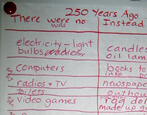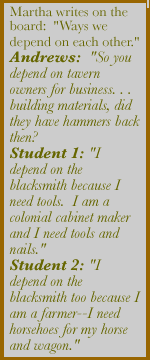 |

 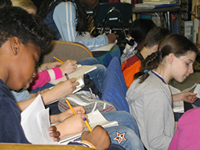 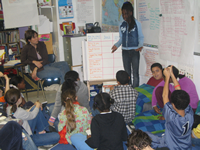 Andrews began the project in early March, following a study of "Life in New Amsterdam." Although the project was designed to last six weeks, it stretched on for several additional weeks because of the normal constraints of the school calendar and the students' interest in the material. This page details the key parts of the project as it unfolded and the several of the specific activities that Andrews used. Three classes were videotaped, clips of which can be accessed below. Some samples of related student work and exceprts from Andrews and Falk's reflections after each class are also provided. Longer videos from these classes are available by DVD. |
|||||||||
|
|||||||||
Part 6: Whole Class Town Meeting to discuss taxation of the colonists by the British Government. |
|||||||||
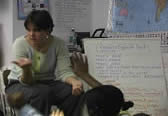 1st "Town Meeting." Martha introduces the lesson: the colonists are being taxed (Townshend Act) (6 min. video). |
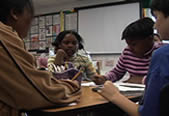 Students work in small groups and the class meets for a second town meeting (10 min. video of excerpts). |
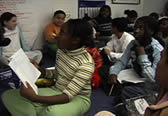 Individual writing; 3rd whole group town meeting (6 min. video). |
Martha talks about the day (watch 1 min. video). | ||||||
| • What are taxes? What are they used for? How are they decided? • Budgeting--how are these taxes affecting you as colonists? • What can the colonists do about the taxes? What are the consequences? What will you do about the taxes? Part 7: Students create budget for things they need to buy and calculate total taxes they must pay. • Why does the government assess taxes? How does it affect the lives of individuals and communities? |
Martha talks about students' understanding of taxation and development of their characters (watch 1:25 min. video). | ||||||||
| Part 8: In their colonial characters, students discuss the taxes and try to decide what they should do to counteract them. • How can communities and individuals show disagreement with their governments? What means of power does the common person have? |
|||||||||
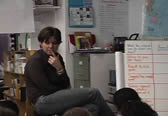 Martha and the class read and discuss a secret message (12:45 min. video) (read message, pdf). |
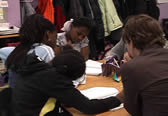 Students work in their groups (3:35 min. video). |
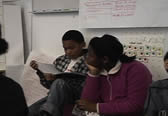 Second town meeting of the day (4:45min. video). |
Chart used in town meeting: "What the colonists can do about taxes" Martha and Beverly talk about the day (watch 7:25 min. video). |
||||||
| Part 9: Students write about the benefits of being Loyalists and Patriots and whether they are leaning toward staying with King George or going with the Sons of Liberty and the Rebels. • What are the pros and cons of remaining loyal? How do groups of people make decisions together? How do people discuss differing opinions respectfully? |
Loyalist/Patriot | ||||||||
| Part 10 (May 16): Students' Final Presentations at a Town Meeting: "Will you sign the Declaration of Independence?" | Assignment | ||||||||
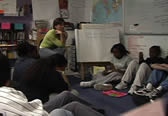 Town Meeting: Students' Final Presentations (11:30 min. video) |
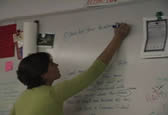 Meeting ends; Martha assigns reflection questions. (4 min. video) |
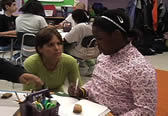 Students write reflections about the day/unit. (4 min. video) |
Final Papers Beverly talks about the day (watch 6:35 min.video). |
||||||

